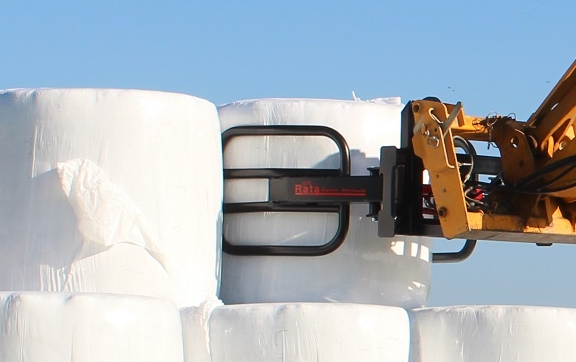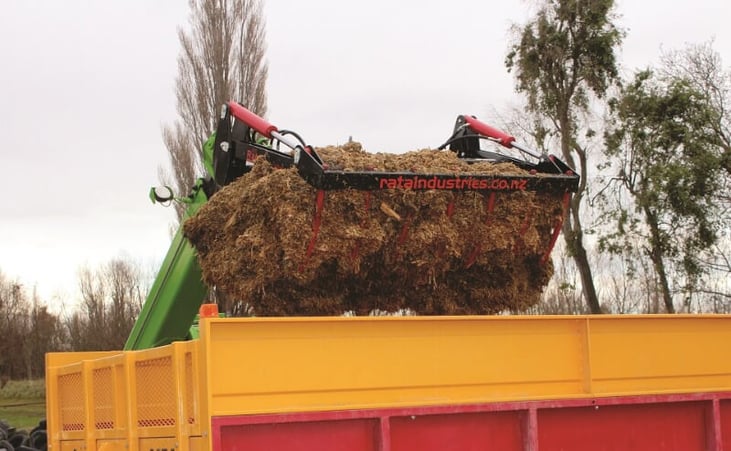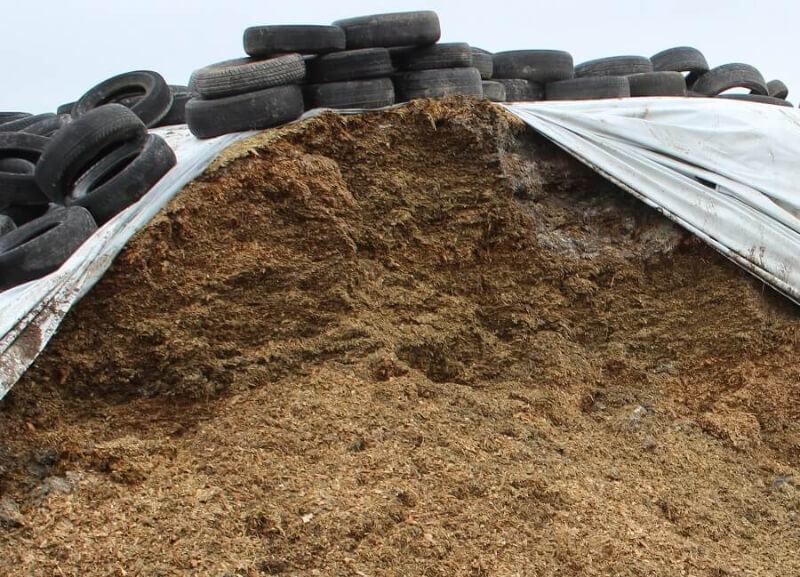Did you hear about the Australian beef farmer who dug into a 26-year-old silage pit last year, at the height of the NSW drought? From a bumper 1992 crop, Don Woods put 160 tonnes of chopped forage sorghum into a hillside pit on his Tamworth farm. He opened up the pit last year and while the texture hadn’t improved with age, the silage still had a protein content of 7.5%, with the acidic environment in the pit preserving the forage’s nutritional value. It saved his breeding herd.
There’s a lesson here for Kiwi farmers reaping the benefits of a bumper season for grass and forage crops – get the long-term storage of silage right and that surplus can sit in the ground or under wraps for decades, giving you peace of mind that you have something set aside for a dry year. Get your silage storage wrong, and that surplus will rot and go to waste.
Find out what silage handling attachment is best for your farm, click here
Silage storage techniques for Kiwi farmers
Traditionally the main types of silage storage have been:
- Wrapped Bales,
- Above-ground stacks or buns,
- Above ground Bunkers,
- Hillside pits and
- Underground pits.
The first three are shorter-term options, good for up to three years of storage according to some independent research organisations. Don Woods’ silage lasted 26 years in a hillside pit.
Where Kiwi farmers have hills or big enough undulations on their farm it'd be pretty easy to do the same as Don, but if your on the flat or do not have a hill in the right place, you obviously cant! Underground pits are another good option for long-term storage, but to be of real value you have to dig a big hole, and for farms in some areas of New Zealand this could make it vulnerable to shifts in the water table.
The success of long term silage storage comes down to how well it's protected from air and other contamination, which is why underground storage is ideal being low cost and long term as well as completely sealed off.
Already put your silage into storage?
Most silage would already be in storage by now, so it's quite obviously best left there, unless of course you have put some or all of it into wrapped bales!
If you have already put your silage into bales you can still dig a pit and put them in at any time to extend their storage life. Where a pit isn't practical for your farm due to terrain and water table shifts another long term storage method is to put your silage into wrapped bales and cover with another layer of protective plastic, this might not get you another 26 years! but it will prevent weathering, UV breakdown and damage from other pests etc, putting another few years storage life on your wrapped bales.
As technology has advanced, wrapped silage bales have come to the fore as an ideal way to store silage long-term. Provided the airtight seal of the wrap isn’t broken, the silage can be stored indefinitely. If it is broken, the silage begins to rot and must be fed out immediately.
It’s a big jump from indefinitely to immediately, which is why wrapped bales need to be handled with care, and that means using a specialised bale grab. Also known as “soft bale hands”, these grip the bale’s exterior with firm but gentle pressure, allowing easy handling with no wrap damage, thus preserving the quality of the feed inside. Rata Wrapped Bale Handlers are the most popular wrapped bale grabs on the New Zealand market. Check them out here
Other tips for long-term storage of wrapped bales are:
- Stack them in a secure location as soon as possible after wrapping, as wrapped bales in the field are prone to damage from stock and wildlife.
- Transport and store bales on the end with the most plastic against the ground. Round bales should always be stored on the flat side.
- Use high quality bale wrap, higher quality wrap with a higher UV resistance will ensure the wrap remains effective for longer periods of time without breaking down in our harsh climate.

To find out more about how to stack and handle wrapped silage bales, click here.
Australian farmers are used to battling drought, which is why some of them, such as Don Woods of Tamworth, are so good at storing their silage for the dry years they know will come. New Zealand farmers are coming off a good year for grass and silage growth – the challenge is to follow that Aussie example and do a good job of storing the surplus for a year when the rains don’t come.
The full article about Don Woods 26 year old silage can be read on the NSW farmers website: Full Story, click here.
Feeding out pit & stack silage

When it come to feeding out pit and stack silage it's important to use the right attachment for the job. If your handling and feeding large quantities of silage, a purpose built silage grab that does the job whilst leaving your stack face clean is required. Proper stack face management helps to prevent further losses from secondary fermentation and spoilage.
Find out what silage handling attachment is best for your farm, click here


.webp)